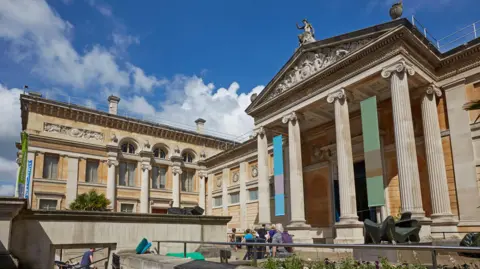Rare renaissance painting saved for UK
 PA Media
PA MediaA museum has raised almost £4.5m to save a rare Italian renaissance painting.
The Ashmolean Museum, which is part of the University of Oxford, paid £4.48m for the 1420s crucifixion painting by artist Fra Angelico.
The work had been in a private British collection for more than 200 years but was sold to an overseas buyer, and was at risk of leaving the UK.
An export bar was granted on the piece in January, meaning it could not leave the country, which allowed Oxford university nine months to raise money to purchase it.
 Getty Images
Getty ImagesThe director at Ashmolean Museum, Dr Xa Sturgis, said it was a "really exciting moment" for staff to acquire such an "important work" after securing the funds by the 29 October deadline.
He described The Crucifixion With the Virgin, Saint John The Evangelist And The Magdalen as a "very beautiful" and "very moving" painting.
It is believed to be the earliest surviving painting by Fra Angelico.
Dr Sturgis said crucifixion was a subject that the artist "painted again and again throughout his career".
"With this picture, he sets the way in which he approaches the subject and so it's an exciting picture because it's a young artist at the beginning of his career," he continued.
'Belongs to the nation'
The free-to-visit museum has another painting from the end of Fra Angelico's career which means visitors can now see how his art developed throughout his life.
The piece will be used in the teaching of Oxford undergraduates in subjects including history and the history of art and theology, and will be included in the collection of artworks shown to more than 40,000 school children each year.
"They are a collection that essentially belongs to the nation and to the public," Dr Sturgis said.
You can follow BBC Oxfordshire on Facebook, X (Twitter), or Instagram.
